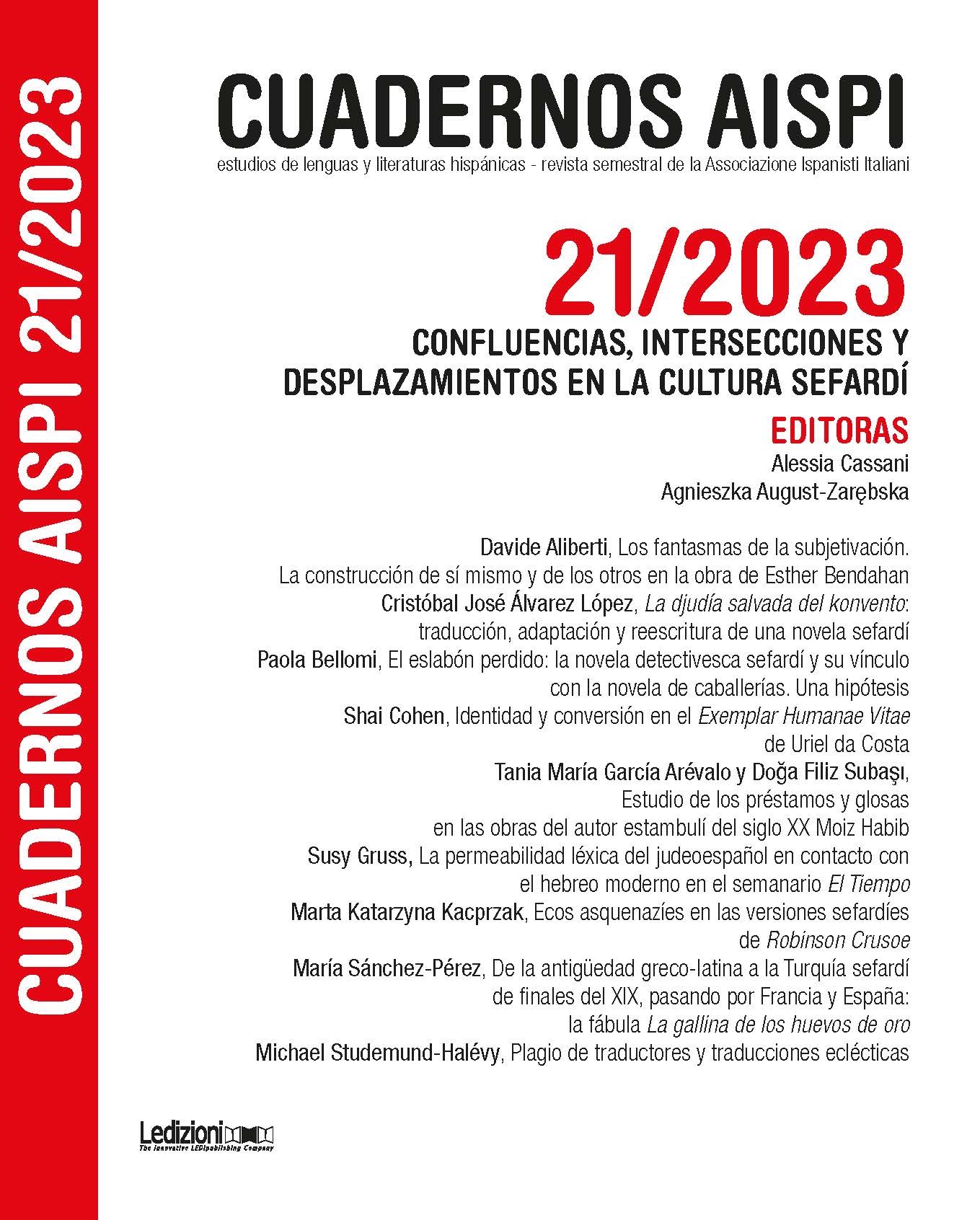Identity and conversion in Exemplar Humanae Vitae by Uriel da Costa
DOI:
https://doi.org/10.14672/1.2023.2178Keywords:
Uriel da Costa, conversion, judeoconversos, Sephardic identity, judaism, baroqueAbstract
This paper studies the autobiographical text by Uriel da Costa regarding the process of his conversion in the context of a crypto-Jewish family in Portugal and their transition to Sephardim in 17th century Amsterdam. A close and critical analysis of the text reveals the struggle of the identity of Jews reverted from Christianity confronted with the Sephardim of the community. In Exemplar Humanae Vitae, da Costa used baroque motifs and anthropocentric mindset to question the place of a man in relation to his environment. For this reason, it is one of the most revealing autobiographical texts, in which this ancient dichotomy between church and synagogue is reflected.
Downloads
References
Alcalá, Ángel (2011), Los judeoconversos en la cultura y sociedad españolas, Madrid, editorial Trotta.
Austin, J.L. (1962), How to do Things with Words. The William James Lectures delivered at Harvard University in 1955, Oxford, Clarendon Press.
Bal, Mieke ed. (2005), Narrative Theory vol. IV, Critical Concepts in Literary and Cultural Studies, New York, Routledge.
Cohen, Shai (2018), “El retorno de los judeoconversos portugueses en época del conde duque de Olivares”, Hipogrifo, 6, 1: 191-215.
Cohen, Shai (2021), “Identidad judeoconversa y circunstancias económicas en el triángulo del MAL: la perspectiva de Gomes Solis y Penso de Vega”, eHumanista/Conversos, 9: 105-18.
da Costa, Uriel (1985), Espejo de una vida humana (Exemplar humanae vitae), ed. Gabriel Albiac, Madrid, Hiperión.
da Costa, Uriel (1993), Examination of Pharisaic Traditions (Exame das tradiçoes phariseas), ed. H. P. Salomon, I.S. D. Sassoon, Leiden/New York, Köln, Brill.
den Boer, Harm (2021), “Sobre el canon converso: el Tratado de la oración y meditación de David Mugnon”, eHumanista/Conversos, 9: 50-69.
Kaplan, Yosef (1982), “From Apostasy to Return to Judaism: The Portuguese Jews in Amsterdam” [Hebrew, translation/adaptation by Natan Ginsbury], The Jewish Heritage of Spain and the Eastern Mediterranean Lands, Jerusalem.
Kaplan, Yosef (2016), Seventeenth-century Sepharadic Readings, Leiden, Brill.
Muñiz Grijalvo, Elena (2003), “Los relatos cristianos de conversión y sus efectos sobre la experiencia”, Dialogues d’histoire ancienne, 29, 1: 137-53.
Nock, Arthur Darby (1988), Conversion, the Old and the New in Religion from Alexander the Great to Augustine of Hippo, Brown Classics in Judaica, University Press of America.
Popkin, R.H. (1994), “Christian Jews and Jewish Christians in the 17th century”, Jewish Christians and Christian Jews., eds. R. H. Popkin; G. M. Weiner. Kluwer Academic Publishers: 57-72.
Pulido Serrano, Juan Ignacio (2011), “Plural identities: the Portuguese New Christians”, Jewish History, 25: 129-51.
Sicroff, Albert A. (1985), Los estatutos de limpieza de sangre, controversias entre los siglos XV y XVII, Madrid, Taurus.
Studemund-Halévy, Michael (2000), “Senhores versus criados da Nacao: Portugueses, asquenazíes y tudescos en el Hamburgo del siglo XVII”, Sefarad, 60, 2.
Tartakoff, Paola (2020), Conversion, Circumcision, and Ritual Murder in Medieval Europe, Philadelphia, University of Pennsylvania Press.
Downloads
Published
Issue
Section
License

This work is licensed under a Creative Commons Attribution-NonCommercial-NoDerivatives 4.0 International License.
La revista está publicada bajo la licencia Creative Commons CC-BY.




